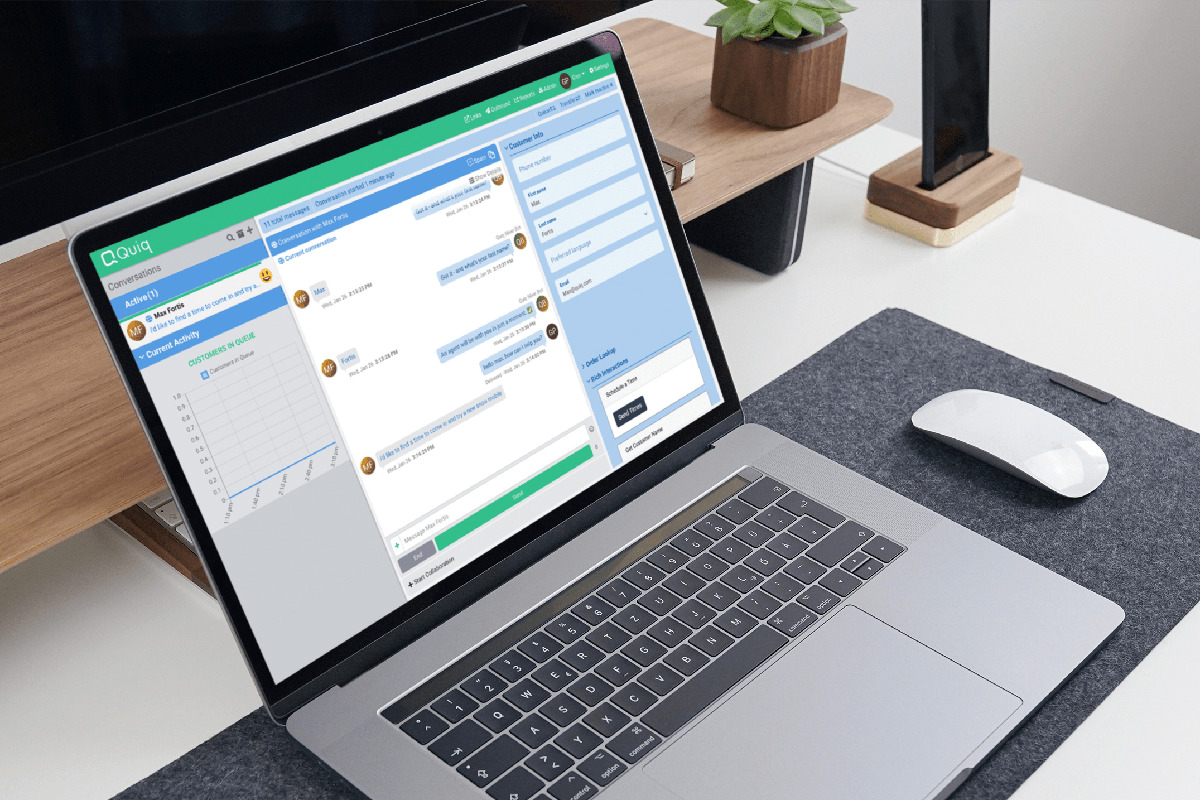Metrics are the lifeblood of help desks and contact centers. Most help desk leaders are using a variety of metrics to measure their team’s performance, but which data should you track?
Data can help drive success, but collecting the wrong metrics (and too many) can cause overwhelm and unnecessary stress on your team.
Traditionally, a help desk refers to IT or internal support. Over time, people have expanded the use of the phrase to include a service desk, general customer support, and customer service teams.
We’ve put together the 10 most vital help desk metrics you should track. Keep reading to learn what they are and how you can use them to improve your customer service.
1. Ticket volume
Your basic metric: How many tickets does your helpdesk receive over a given period of time? Use this information to track busy periods and make important decisions like how many agents you should hire.
2. Ticket channel distribution
This metric helps you track where your tickets are coming from. Do most of your customers use live chat (or web chat)? How many tickets come from Apple Messages for Business? Knowing how many tickets come through each channel will help you allocate resources. You’ll also know which channels to spend more time training your agents on.
3. Response time
Response time measures how fast your agents first respond to customers. This is a big deal for your customer experience. In fact, 83% of customers expect to interact with someone immediately when they contact a company, according to Salesforce’s State of the Connected Customer report.
Response time expectations often vary between channels. For example, customers reaching out on web chat expect an answer within minutes (if not seconds). Yet with channels like SMS/text messaging or email, customers are more forgiving of slower response times.
4. Open tickets vs. resolved tickets
How many tickets are coming in each day and how many are being resolved? This is a good indicator of agent performance and workload. A healthy help desk team will see roughly the same number of new tickets and resolved tickets each day.
You can quickly identify a problem with your team by looking at this metric. Too many unresolved tickets could mean you need to hire more agents, spend more time on training, or redistribute work so that tickets get resolved faster.
5. Average resolution time
Your average resolution time is a vital metric for measuring your help desk’s performance. How long it takes to resolve a customer inquiry directly impacts the customer experience. Resolution times will vary depending on the complexity of the tickets and your industry, but faster is almost always better.
Be sure to include the total time from when a customer first submits a ticket to when the agent closes it out. Yes, this includes response times too!
6. Conversations per agent
Track how many conversations your agents can manage over a given time period. Identify which agents are taking the most calls to see how you can redistribute the workload.
In a similar vein, you can also track your agents’ utilization rate (time spent solving customer issues divided by total time working). This will tell you which agents are overworked and which have time for extra tasks. Here’s a quick tip: Never aim for a 100% utilization rate. You’ll burn out employees and leave no time for administrative tasks.
7. First-contact resolution rate
Your first-contact resolution rate (FCR) measures how many tickets are solved on the first try. Since 80% of customers expect to solve complex problems by speaking to one agent, according to Salesforce, tracking this metric helps you identify if you’re meeting customer expectations.
Getting customers quick and painless answers often comes down to agent training and easy access to information. Use a conversational platform that easily integrates with your CRM or information databases so agents can pull product or customer info for a frictionless customer experience.
8. Containment rate
Containment rate measures how many people interact with a chatbot or IVR help options without speaking with a live agent. This metric helps you track how effective your chatbot conversations are. If too many people still need to switch to a live agent after talking to your chatbot, it can impact customer satisfaction.
Containment standards vary across industries, but with Quiq’s Conversational AI, contact centers see a 70% containment (or contact deflection) rate.
A word of caution: Use this metric with context. Containment shouldn’t be your top priority—helping customers should. While reducing agents’ workload (and operating costs while you’re at it) is beneficial, you don’t want to risk the customer experience to make it happen. Don’t make it more difficult for customers to reach live agents just to improve this metric. Instead, work to make your chatbots as helpful as possible while still giving customers the option to chat with a human.
9. Customer satisfaction
A fast and efficient help desk with the best metrics in the industry will still be the worst performing if customers aren’t happy. While numbers are important to keeping costs down, providing excellent customer service is the best way to keep sales up. According to Salesforce, 94% of customers say a positive customer service experience makes them more likely to purchase again.
Survey customers immediately after helpdesk interactions to ensure customers are leaving those conversations with answers and good feelings about your brand.
10. Agent satisfaction
While most of these metrics rely on agent performance, this one is surveying you. It’s easy to think you need agents to work harder and lower your operational costs. But don’t forget that pushing them too far will lead to stressed employees, burnout, and high turnover. Finding and training agents will cost you much more in the long run.
Survey agents on a regular basis to gauge their workload levels, see if they have the right tools and equipment, and ensure all levels of management are providing the support your agents need.
3 help desk best practices to keep in mind.
Metrics are important to keep your customer contact center running smoothly, but they can’t measure everything. Here are a few additional help desk metrics best practices to keep your contact center running smoothly.
1. Design chatbot conversations to solve problems—not put up roadblocks.
Chatbots are an integral part of a winning customer service strategy. They give customers 24/7 access to help, they help streamline agent conversations, and they reduce ticket volume. But don’t design the conversations as barriers to overcome to reach your live agents. Your customers shouldn’t have to perform the 12 labors of Hercules to reach Mt. Olympus.
Instead, design chatbots to answer common FAQs, collect information, troubleshoot problems, and other helpful tasks. Make sure you include an easy way for customers to connect with live agents and review the conversation so no one will have to repeat information.
2. Don’t keep help desk metrics in a silo.
These metrics are incredibly valuable for your customer service team, but they can also benefit the rest of your organization. If you suddenly have an influx of new ticket requests, maybe there’s a problem with a product. Maybe your web team needs to redesign a customer flow. If you’re seeing a shift from tickets via web chat to Facebook, that’s a good indicator that your customers spend more time there—information that will be helpful for your social media team.
It’s also important to look at your own help desk metrics in context with what’s going on in your organization. Don’t penalize agents for a large backlog when a new product release isn’t going well.
3. Build up your self-service options.
Whether it’s a knowledge-base, FAQ page, or AI chatbot (or hopefully all three), spend time and effort building out these resources. Giving customers the option to help themselves will reduce call volume and reduce the number of menial questions agents have to answer (which they’ll likely thank you for).
And it’s not just for the sake of your help desk team. Customers actually want more self-service options. According to Zendesk’s CX Trends report, 89% of customers will spend more with companies that allow them to find answers online without having to contact anyone.
Pick the right metrics to see your help desk performance soar.
There are so many potential help desk metrics that it’s easy to get overwhelmed. Zero in on those measuring the customer experience and your agency performance to gather the most relevant data and make the biggest impact on your business.



